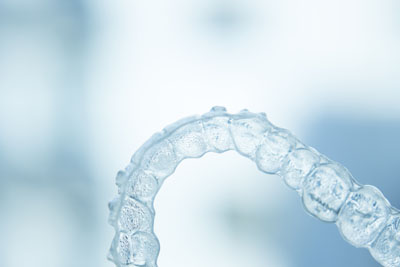 The Invisalign system is the virtually invisible way to straighten your teeth and achieve the smile you’ve always wanted. Using advanced 3-D computer imaging technology, Invisalign depicts your complete treatment plan, from the initial position of your teeth to the final desired position. Our team of specialists here in Armonk offer the latest Invisalign treatments. Our experience combined with the benefits of Invisalign technology, offer you a faster, more comfortable smile without the need for braces.
The Invisalign system is the virtually invisible way to straighten your teeth and achieve the smile you’ve always wanted. Using advanced 3-D computer imaging technology, Invisalign depicts your complete treatment plan, from the initial position of your teeth to the final desired position. Our team of specialists here in Armonk offer the latest Invisalign treatments. Our experience combined with the benefits of Invisalign technology, offer you a faster, more comfortable smile without the need for braces.
As Invisalign continues to grow in popularity as an effective alternative to braces, you may be hearing more about it, and find yourself wondering how the whole process actually works. Because the clear aligners don’t bear any resemblance to traditional metal braces with wires and brackets, they can be a bit of a mystery even to patients who are familiar with orthodontic treatments.
So what exactly is Invisalign, and how does it work?
Invisalign was approved by the FDA for teeth alignment in 1998. Since then, millions of orthodontic patients have opted for the Invisalign teeth alignment technology. The Invisalign system is the virtually invisible way to straighten your teeth and achieve the smile you’ve always wanted. Invisalign aligners are clear; no one should even notice that you’re wearing braces, making Invisalign a seamless fit with your lifestyle and day-to-day interactions with others. Invisalign is removable. Unlike braces, you have the flexibility to eat and drink what you want during treatment simply by removing the aligners when you eat. You can also remove the aligners to brush and floss as you normally would for fresh breath and good oral hygiene. Unlike traditional metal braces, Invisalign does not use metal brackets or wires that could cause irritation to your mouth. In addition, you’ll spend less time in the doctor’s chair and scheduling appointments, and more time out doing the things you love. Lastly, Invisalign allows you to view your virtual results and treatment plan before you start your treatment, so that you can preview how your straight teeth will look once your treatment is complete.
There are no wires to poke or brackets to break with Invisalign so it is much more comfortable for you to wear. Invisalign is made of a smooth, comfortable material, which means there is also no chance of an orthodontic emergency. You can remove your aligners to eat, drink, brush or for that special occasion, meaning that, unlike some other orthodontic treatments, there are no foods you have to avoid and you can maintain your current dental hygiene regimen. While not everyone can be treated with Invisalign alone, all cases can be treated with a combination of traditional braces (for a short time) and Invisalign, with outstanding results.
Come into Alyssa J. Albright, DDS for your initial consultation where we will can answer all of your questions and discuss whether Invisalign is the best treatment option to get you the results you’re looking for. We’ll also go over cost, insurance and payment plans. Your doctor will take x-rays and impressions of your teeth, to create a digital 3-D image that will be used in the development of your specific aligners. You’ll walk away with a precise treatment plan, created specifically for you.
Related Posts
Reasons to Visit a Family Dentist for A Dental Exam
A family dentist is a great dental professional to see for routine examinations. They offer both adults and children convenient dental care all at the same place, and often at the same time. Family dentists are …
The Importance of Oral Hygiene During the COVID-19 Disease Lockdown
Good oral hygiene is more important than ever now because you may not be going to your regular appointments. Under normal circumstances, it is recommended to visit your dentist every six months for cleanings and …
4 Preventive General Dentistry Treatments
General dentistry focuses on diagnosing, managing and treating dental and oral health problems. Additionally, general dentists administer routine care so that patients can maintain good oral health. Routine care does include preventive treatments, which can …
Emergency Dentistry and the Coronavirus (COVID-19) Disease: When Is Tooth Pain Considered a Dental Emergency?
Like other health care issues, emergency dentistry and the Coronavirus COVID-19 disease are generating a lot of discussions. The virus is pervading life everywhere, rearranging routines and schedules. The pandemic has not halted oral health …
